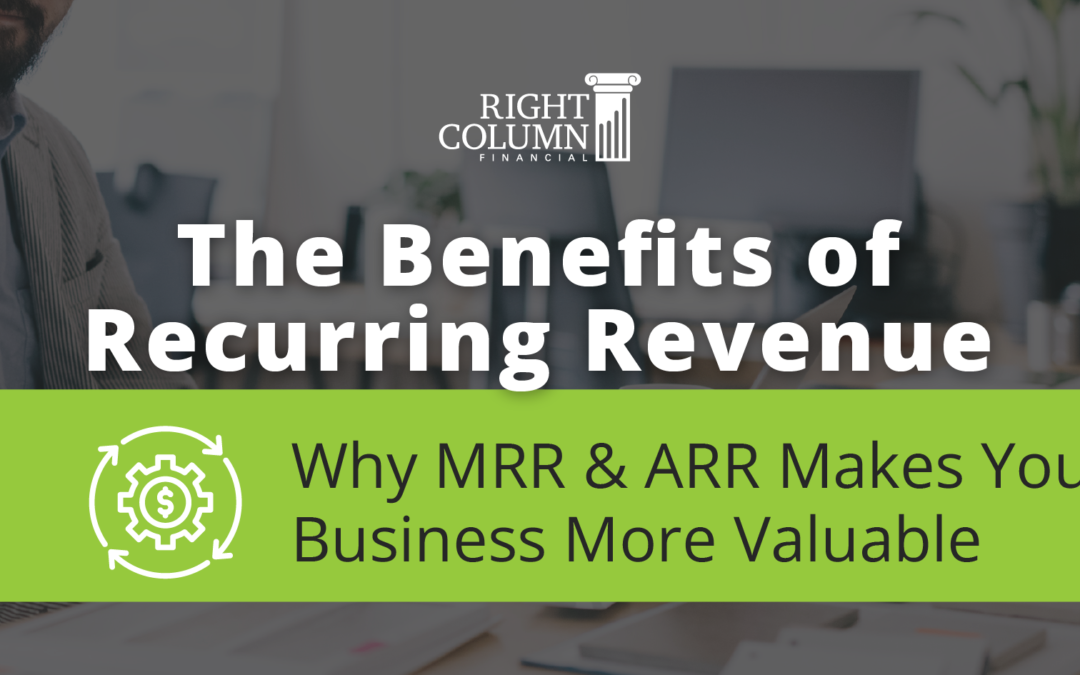How do your customers pay your business for your products or services? Is it a one-time transaction, a recurring fee, or a long-term agreement? All of this matters when it comes to your revenue.
Your business’s revenue includes the money coming in from the sale of the good or service you offer. There are different types of revenue, so to truly understand your business, it is best to keep them separate. Also, different types are better than others, such as recurring revenue. Monthly recurring revenue (MRR) and annual recurring revenue (ARR) are more valuable types of revenue, so they make your business more valuable.
Why Recurring Revenue Is Important
Many businesses operate under a retainer or monthly subscription model, especially with B2B (Business-to-Business) or electronic commerce companies. Your customers might pay a monthly fee each month to retain your services or have access to your product. A great example of a monthly payment retainer would be for a marketing or law firm, and a great example of a monthly subscription would be an online budgeting software for your business. The beauty of this model is that it’s easier to track and project, it’s more reliable than one-time transactions, and it often includes contract agreements with clients for a bit more consistency.
Now, if you are a subscription or retainer-based business, monthly recurring revenue (MRR) is one of the most important metrics to keep track of. To follow MRR, annual recurring revenue (ARR) measures the recurring revenue your business generates over the course of one year. MRR and ARR are valued much higher than any one-off project-based revenue overall. If and when you ultimately look to sell your business, investors or buyers will pay a premium for MRR or ARR; this shows how important these metrics are.
Calculating MRR
Calculating MRR is very simple. For any given month, simply sum up the recurring revenue generated by the customers that month to get your monthly recurring revenue (MRR) figure. Here is a great example:
This marketing firm has 5 clients paying $1,000 per month for their design services. This would mean the design department is generating $5,000 MRR. In another month, if they gain 2 more clients at the same rate, their MRR for 7 clients is now $7,000.
Calculating ARR
Calculating ARR is just as simple. Annual recurring revenue (ARR) is generally used to forecast your business’s annual revenue, assuming there is not much change in your customer base. All you have to do is multiply your average MRR by 12 to arrive at your ARR figure. To use the same example:
This marketing firm has 7 clients paying $1,000 per month for their design services. When forecasting ahead, the business can presume the design department ARR to be $84,000.
The Big Picture
While the calculations for MRR and ARR are very simple, there are also a few things to consider when making these forecasts. Remember, revenue does not equal profitability, so trends or increases in costs will not affect this metric. This is only calculating how money is coming from your customers. Additional customers or fewer customers, discounts, or other factors can affect the MRR and ARR, so it’s important to note that these figures are only measuring the recurring revenue if nothing changes in how much your customers are currently paying your business.
Overall, MRR and ARR are very important for most B2B or subscription-based businesses. It can really say a lot about the profitability and health of your business, both long-term and short-term. These forecasts can help you make critical business decisions like hiring, investing in more office space or materials, and more. Your business will be much more valuable with MRR and ARR, so this is something to keep in mind as you plan ahead.
If your company doesn’t have MRR or ARR, reach out to Right Column to discuss converting your business to this type of model! We work with you and your business to understand the direction that you want to go and advise you on how to get there, with services ranging from Bookkeeping, CFO Services, Payroll, Budgeting & Forecasting, and Reporting & Strategy.
Let us know how Right Column Financial, Inc. can serve you and your business, today!

